Mary Quattlebaum's Blog, page 17
July 6, 2015
HAROLD AND THE PURPLE CRAYON
by Joan Waites
Most of us are familiar with the classic children’s book Harold and the Purple Crayon by Crockett Johnson, first published in 1955. It’s a book I often checked out of the library as a child, and then later read to my own children. Now the book with its worn dust jacket sits upon a shelf in my art teaching studio. I have read the book many times to my young students, using it as an introduction to a lesson on line and shape.
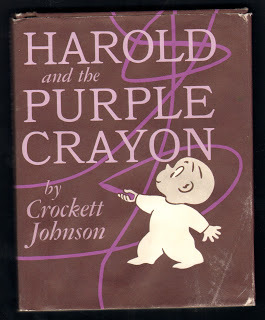
In the story, using just one purple crayon, Harold draws himself a magical imaginary adventure. There are no limits, parents or rules for Harold to obey; his imagination and one purple crayon can take him anywhere.
Using the illustrations in the book, have students identify straight lines, zig-zag lines, curvy lines, wavy lines etc. Next, ask students to identify the basic geometric shapes that make up some of the drawings.
For an art and writing activity, make up individual blank books using any size white paper stapled or glued at the fold. Have each child draw themselves (using a purple crayon or marker) into their own imaginary story that begins and ends at their bedroom window. Ask older students to write text to accompany the illustrations, have younger students explain their drawings to the class.
Where will a purple crayon and their imagination take them?
www.joanwaites.com
Most of us are familiar with the classic children’s book Harold and the Purple Crayon by Crockett Johnson, first published in 1955. It’s a book I often checked out of the library as a child, and then later read to my own children. Now the book with its worn dust jacket sits upon a shelf in my art teaching studio. I have read the book many times to my young students, using it as an introduction to a lesson on line and shape.

In the story, using just one purple crayon, Harold draws himself a magical imaginary adventure. There are no limits, parents or rules for Harold to obey; his imagination and one purple crayon can take him anywhere.
Using the illustrations in the book, have students identify straight lines, zig-zag lines, curvy lines, wavy lines etc. Next, ask students to identify the basic geometric shapes that make up some of the drawings.
For an art and writing activity, make up individual blank books using any size white paper stapled or glued at the fold. Have each child draw themselves (using a purple crayon or marker) into their own imaginary story that begins and ends at their bedroom window. Ask older students to write text to accompany the illustrations, have younger students explain their drawings to the class.
Where will a purple crayon and their imagination take them?
www.joanwaites.com
Published on July 06, 2015 14:00
June 29, 2015
Writing Connections with Brian Selznick
by Mary Quattlebaum
 Brian Selznick is acclaimed for his distinctive, detailed artwork and his innovative books. I talked with him recently, in conjunction with an interactive exhibit of his work and just before his amazing 2015 Arbuthnot Honor Lecture at the Martin Luther King Jr. Memorial Library in Washington, DC. Click here for the video of the Arbuthnot Lecture, “Love Is a Dangerous Angel: Thoughts on Queerness and Family in Children’s Books” (you can fast forward to minute 38 for Selznick’s opening) and here for the KidsPost/Washington Post article on his books and the exhibit.
Brian Selznick is acclaimed for his distinctive, detailed artwork and his innovative books. I talked with him recently, in conjunction with an interactive exhibit of his work and just before his amazing 2015 Arbuthnot Honor Lecture at the Martin Luther King Jr. Memorial Library in Washington, DC. Click here for the video of the Arbuthnot Lecture, “Love Is a Dangerous Angel: Thoughts on Queerness and Family in Children’s Books” (you can fast forward to minute 38 for Selznick’s opening) and here for the KidsPost/Washington Post article on his books and the exhibit.
Below are a few writing prompts for the classroom or for individual writers ages 8 and up.
Writing About Wonders: A Cabinet of Wonders figures prominently in Wonderstruck (Scholastic, 2011).
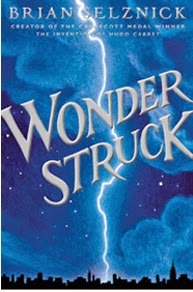
Classroom Discussion: Ask students to bring in a natural wonder (intriguing seashell, fossil, unusual rock, etc.). Research cabinets of wonders and have class (in entirety or in small groups) work together to create their own “cabinet” or display.
Classroom Writing: (Nonfiction/Captions) Assign one child to each item and have him/her research and write a short nonfiction description of it (to include 3 facts). (Creative) Youngsters might also be encouraged to find or write a poem about one of the natural wonders in the display.
Sharing: Mount the display, with captions, and give youngsters a chance to share more information or ask questions of one another. What was their favorite piece in their cabinet—and why?
Related Projects: This approach could be adapted to other classroom or family projects. For example, rather than finding objects, people might assemble photographs of family members and/or pets or take photographs of treasured family objects and then write short captions for a scrapbook. (This might be something especially enjoyable to do, as an entire family, during the summer.)
www.maryquattlebaum.com
 Brian Selznick is acclaimed for his distinctive, detailed artwork and his innovative books. I talked with him recently, in conjunction with an interactive exhibit of his work and just before his amazing 2015 Arbuthnot Honor Lecture at the Martin Luther King Jr. Memorial Library in Washington, DC. Click here for the video of the Arbuthnot Lecture, “Love Is a Dangerous Angel: Thoughts on Queerness and Family in Children’s Books” (you can fast forward to minute 38 for Selznick’s opening) and here for the KidsPost/Washington Post article on his books and the exhibit.
Brian Selznick is acclaimed for his distinctive, detailed artwork and his innovative books. I talked with him recently, in conjunction with an interactive exhibit of his work and just before his amazing 2015 Arbuthnot Honor Lecture at the Martin Luther King Jr. Memorial Library in Washington, DC. Click here for the video of the Arbuthnot Lecture, “Love Is a Dangerous Angel: Thoughts on Queerness and Family in Children’s Books” (you can fast forward to minute 38 for Selznick’s opening) and here for the KidsPost/Washington Post article on his books and the exhibit.Below are a few writing prompts for the classroom or for individual writers ages 8 and up.
Writing About Wonders: A Cabinet of Wonders figures prominently in Wonderstruck (Scholastic, 2011).

Classroom Discussion: Ask students to bring in a natural wonder (intriguing seashell, fossil, unusual rock, etc.). Research cabinets of wonders and have class (in entirety or in small groups) work together to create their own “cabinet” or display.
Classroom Writing: (Nonfiction/Captions) Assign one child to each item and have him/her research and write a short nonfiction description of it (to include 3 facts). (Creative) Youngsters might also be encouraged to find or write a poem about one of the natural wonders in the display.
Sharing: Mount the display, with captions, and give youngsters a chance to share more information or ask questions of one another. What was their favorite piece in their cabinet—and why?
Related Projects: This approach could be adapted to other classroom or family projects. For example, rather than finding objects, people might assemble photographs of family members and/or pets or take photographs of treasured family objects and then write short captions for a scrapbook. (This might be something especially enjoyable to do, as an entire family, during the summer.)
www.maryquattlebaum.com
Published on June 29, 2015 14:00
June 22, 2015
SUMMER LETTERS AND PICTURE POSTCARDS
by Karen Leggett Abouraya
There was a time before Facebook and Flickr when people mailed picture postcards to friends and family as they traveled on vacation. They were often called “penny postcards” because the stamp cost just a penny. Here is one from Washington, D.C. in which the writer - Celinda, my grandmother - tells of voting and attending a luncheon with other Daughters of the American Revolution from Ohio. You’ll also notice that this 1935 postcard bears an address with just a name and a town!

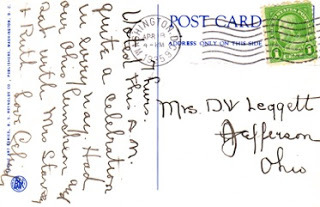
Why not make this the summer to bring back the pleasure of picture postcards and summer letters? A dear friend of mine who goes to Minnesota to fish every summer often writes four to six page letters by hand; they can’t be read on the fly as we do with emails and Facebook posts. They must be savored, as I visualize the family members or fishing adventures he describes.
Debbie Levydevotes her award-winning book, The Year of Good-Byes: A True Story of Friendship, Family, and Farewells, to the beauty and emotional power of much shorter handwritten notes. The notes include drawings and poetry in a poesiealbum, or autograph book, kept by Debbie’s mother Jutta during her last year in Germany in 1938. Young readers continue to add their own poetry to Debbie’s Poesiealbum Project.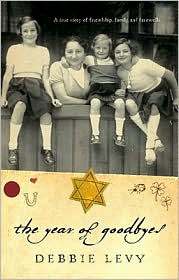
In Valerie Tripp’s American Girl book, Changes for Kit, Kit Kittredge writes a letter to the editor dictated by her uncle. She disagreed with it so completely that she wrote her own - and the newspaper printed hers! The teachers who developed the website Books Kids Love include a long list of titles perfect for encouraging letter writing.
Letters help us preserve memories, make political statements or just add pleasure to a friend’s day. Encourage students to write and send a picture postcard from wherever they are going this summer - or even from their own hometown. It is a chance to practice the mechanics of writing an address correctly when it includes more than just a @ and a dot. The space on a postcard is small enough that even reluctant writers might be inspired. A 140-character Tweet would fit just fine!
Encourage students to • describe something colorful or interesting in a few carefully chosen words, or• tell what they have been doing so that the reader could visualize it, or• make a connection with the reader by mentioning something they have in common that relates to the picture or place (hearing a band they both like, seeing a funny dog or cat, flying a kite on the beach), or• send postcards to a teacher at school so they can be shared in the fall.
Wishing everyone a lovely summer, filled with books - and letters!
http://childrensbookguild.org/karen-leggett-abouraya
There was a time before Facebook and Flickr when people mailed picture postcards to friends and family as they traveled on vacation. They were often called “penny postcards” because the stamp cost just a penny. Here is one from Washington, D.C. in which the writer - Celinda, my grandmother - tells of voting and attending a luncheon with other Daughters of the American Revolution from Ohio. You’ll also notice that this 1935 postcard bears an address with just a name and a town!


Why not make this the summer to bring back the pleasure of picture postcards and summer letters? A dear friend of mine who goes to Minnesota to fish every summer often writes four to six page letters by hand; they can’t be read on the fly as we do with emails and Facebook posts. They must be savored, as I visualize the family members or fishing adventures he describes.
Debbie Levydevotes her award-winning book, The Year of Good-Byes: A True Story of Friendship, Family, and Farewells, to the beauty and emotional power of much shorter handwritten notes. The notes include drawings and poetry in a poesiealbum, or autograph book, kept by Debbie’s mother Jutta during her last year in Germany in 1938. Young readers continue to add their own poetry to Debbie’s Poesiealbum Project.

In Valerie Tripp’s American Girl book, Changes for Kit, Kit Kittredge writes a letter to the editor dictated by her uncle. She disagreed with it so completely that she wrote her own - and the newspaper printed hers! The teachers who developed the website Books Kids Love include a long list of titles perfect for encouraging letter writing.
Letters help us preserve memories, make political statements or just add pleasure to a friend’s day. Encourage students to write and send a picture postcard from wherever they are going this summer - or even from their own hometown. It is a chance to practice the mechanics of writing an address correctly when it includes more than just a @ and a dot. The space on a postcard is small enough that even reluctant writers might be inspired. A 140-character Tweet would fit just fine!
Encourage students to • describe something colorful or interesting in a few carefully chosen words, or• tell what they have been doing so that the reader could visualize it, or• make a connection with the reader by mentioning something they have in common that relates to the picture or place (hearing a band they both like, seeing a funny dog or cat, flying a kite on the beach), or• send postcards to a teacher at school so they can be shared in the fall.
Wishing everyone a lovely summer, filled with books - and letters!
http://childrensbookguild.org/karen-leggett-abouraya
Published on June 22, 2015 14:00
June 15, 2015
HOME ALONE: THE ART OF SHORT STORY
by Jacqueline Jules
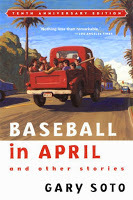 While picture books are always great writing models, short stories can be very effective, too, especially for the middle and high school classroom. Gary Soto’s classic Baseball in April contains eleven stories of adolescence. The collection portrays Hispanic characters in California dealing with universal themes of friendship, family relationships, and self-confidence.
While picture books are always great writing models, short stories can be very effective, too, especially for the middle and high school classroom. Gary Soto’s classic Baseball in April contains eleven stories of adolescence. The collection portrays Hispanic characters in California dealing with universal themes of friendship, family relationships, and self-confidence.
“Growing Up” has a particularly compelling plot of a tenth grade girl who gets her wish of staying home from a family vacation. Yet while her family is away, she worries and regrets her decision. “Growing Up” should strike a chord with middle and upper grade students through its emotional center and imagined scenario of staying behind with your friends while your family travels. Ask your students to write about why they might want to be excused from a trip and if being mature means separating yourself from your family. What would they do at home on their own? Would their parents trust them to obey the rules? How would they feel about being separated from their parents for the first time? After responding in personal narratives, students could then go on to create a fictional character staying home from a family vacation.
Some students might want to make a comparison to the popular movie, Home Alone. A humorous approach is just as acceptable as a serious one, especially since in both the movie and Gary Soto’s story, family relationships and maturity are explored.
“Barbie” in Baseball in April should also resonant with students. This tale revolves around the acquisition of a longed-for doll with a disastrous result. Students should find plenty of inspiration to write about a time when they finally received an object they wanted only to have it ruined. Like the other short stories in this collection, “Barbie” is a great example of a clear beginning, middle, and end.
Short stories are a unique art form in that they establish a fully drawn character with a specific problem that is resolved in a few pages. Young writers often run into trouble when attempting fiction. They envision themselves writing a novel with hundreds of pages. But before you can tell a long story, you need to be able to effectively tell a short one. Reading and responding to short stories will help young writers strengthen their skills.
www.jacquelinejules.com
 While picture books are always great writing models, short stories can be very effective, too, especially for the middle and high school classroom. Gary Soto’s classic Baseball in April contains eleven stories of adolescence. The collection portrays Hispanic characters in California dealing with universal themes of friendship, family relationships, and self-confidence.
While picture books are always great writing models, short stories can be very effective, too, especially for the middle and high school classroom. Gary Soto’s classic Baseball in April contains eleven stories of adolescence. The collection portrays Hispanic characters in California dealing with universal themes of friendship, family relationships, and self-confidence. “Growing Up” has a particularly compelling plot of a tenth grade girl who gets her wish of staying home from a family vacation. Yet while her family is away, she worries and regrets her decision. “Growing Up” should strike a chord with middle and upper grade students through its emotional center and imagined scenario of staying behind with your friends while your family travels. Ask your students to write about why they might want to be excused from a trip and if being mature means separating yourself from your family. What would they do at home on their own? Would their parents trust them to obey the rules? How would they feel about being separated from their parents for the first time? After responding in personal narratives, students could then go on to create a fictional character staying home from a family vacation.
Some students might want to make a comparison to the popular movie, Home Alone. A humorous approach is just as acceptable as a serious one, especially since in both the movie and Gary Soto’s story, family relationships and maturity are explored.
“Barbie” in Baseball in April should also resonant with students. This tale revolves around the acquisition of a longed-for doll with a disastrous result. Students should find plenty of inspiration to write about a time when they finally received an object they wanted only to have it ruined. Like the other short stories in this collection, “Barbie” is a great example of a clear beginning, middle, and end.
Short stories are a unique art form in that they establish a fully drawn character with a specific problem that is resolved in a few pages. Young writers often run into trouble when attempting fiction. They envision themselves writing a novel with hundreds of pages. But before you can tell a long story, you need to be able to effectively tell a short one. Reading and responding to short stories will help young writers strengthen their skills.
www.jacquelinejules.com
Published on June 15, 2015 14:00
June 8, 2015
WRITE YOUR ABC'S
by Alison Ashley Formento
Alphabet books fill the children’s shelves at libraries and bookstores. They are easily found in book bargain bins at local retail and grocery stores. Teachers and parents pull out popular ABC picture books to use in teaching letter recognition to young readers. Authors who write for children love ABC books, too. Every picture book author I know has attempted to write an ABC story, or many, even though these are hard to sell to editors since there is always glut of these titles in the marketplace. Still, new ABC books appear every year, and if the illustrations are fun like Miss Spider’s ABC by David Kirk, or sweet like Margaret Wise Brown’s Sleepy ABC , with pictures by Karen Katz, we’ll eagerly add more of these books to our collection.
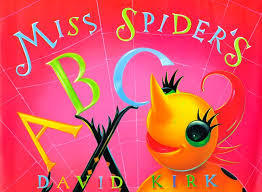
Write your ABCsChallenge your students to write their own ABC into a fun story poem.Alliteration is a great way to inspire ideas and it certainly can add to the ABC fun. Long or short sentences are fine. It’s your choice.
Short sentence example: Apes ate ants.
Longer sentence example: Alice’s alligator ate apricots and asparagus at an Albany assembly.
Use your favorite activities (sports, hobbies) to help inspire ABC ideas, too.
Example: Alex aced archery.Beth bounced basketballs.Carlos caught catfish.Dean dove deep.
Once you’ve completed your letter list, if you’re inspired, add drawings to create your own ABC picture book.
www.alisonashleyformento.com
Alphabet books fill the children’s shelves at libraries and bookstores. They are easily found in book bargain bins at local retail and grocery stores. Teachers and parents pull out popular ABC picture books to use in teaching letter recognition to young readers. Authors who write for children love ABC books, too. Every picture book author I know has attempted to write an ABC story, or many, even though these are hard to sell to editors since there is always glut of these titles in the marketplace. Still, new ABC books appear every year, and if the illustrations are fun like Miss Spider’s ABC by David Kirk, or sweet like Margaret Wise Brown’s Sleepy ABC , with pictures by Karen Katz, we’ll eagerly add more of these books to our collection.

Write your ABCsChallenge your students to write their own ABC into a fun story poem.Alliteration is a great way to inspire ideas and it certainly can add to the ABC fun. Long or short sentences are fine. It’s your choice.
Short sentence example: Apes ate ants.
Longer sentence example: Alice’s alligator ate apricots and asparagus at an Albany assembly.
Use your favorite activities (sports, hobbies) to help inspire ABC ideas, too.
Example: Alex aced archery.Beth bounced basketballs.Carlos caught catfish.Dean dove deep.
Once you’ve completed your letter list, if you’re inspired, add drawings to create your own ABC picture book.
www.alisonashleyformento.com
Published on June 08, 2015 14:00
June 1, 2015
WRITE ABOUT WHAT YOU LOVE
Guest Post by Kitson Jazynka
When I talk to kids about writing, I often talk about how I write about what I love – horses, dogs, and kids, to name a few. I encourage kids to think about what they love, hoping they’ll discover topics they’d enjoy writing about.
In your classroom, you could ask students to think about something they love – is it baseball, cupcakes or horses? Then ask the kids to:
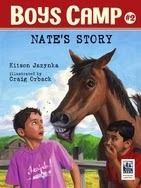
- Describe the thing they love using descriptive, sensory words. What does it feel like to throw a baseball, eat a cupcake or touch a horse? What do you hear? What do you see or taste? In my book, Boys Camp, Nate’s Story, one of my favorite parts is a scene where the main character shares his apple with a horse – something I love to do! In the text I wrote about what it sounds like, smells like and looks like to share an apple with a horse: “With one giant slurp, he sucked it into his large mouth. His jaws pumped up and down slowly. Kersplunch. Kersplunch. Kersplunch. Sweet-smelling foam oozed out of his mouth.”
- Toy with strong verbs that convey a lot of meaning with just a few letters. For instance, a horse doesn’t just “chew,” his jaws “pump!” Or he doesn’t just have to “go” from one place to another, he might “leap,” “prance,” “trudge” or “charge.”

- Think of funny or unexpected things that have happened or could happen in the context of the thing you love. What nutty thing happened during a baseball game or while eating a cupcake or being around a horse, for instance? Like the time my adorable (and sometimes mischievous) horse, Windy, stole a carrot from my pocket. Not long after, I wrote a poem for a writing workshop about the missing carrot. The poem later became the text for a beautifully-illustrated picture book called Carrot in My Pocket. Good things can happen from just thinking about – and writing about – the things we love.
 Kitson Jazynka is the author of 10 books for children including National Geographic Kids Mission Wolf Rescueand Boys Camp Nate’s Story and Boys Camp Zee’s Story. She contributes regularly to the Washington Post’s KidsPost section, children’s magazines including American Girl, National Geographic Kids, and Young Rider. She also writes for adults in national horse and dog magazines. She lives in Washington, DC with her husband, two sons, two German Shepherd dogs and one very patient cat. Visit Kitson online at www.kitsonjazynka.com.
Kitson Jazynka is the author of 10 books for children including National Geographic Kids Mission Wolf Rescueand Boys Camp Nate’s Story and Boys Camp Zee’s Story. She contributes regularly to the Washington Post’s KidsPost section, children’s magazines including American Girl, National Geographic Kids, and Young Rider. She also writes for adults in national horse and dog magazines. She lives in Washington, DC with her husband, two sons, two German Shepherd dogs and one very patient cat. Visit Kitson online at www.kitsonjazynka.com.
When I talk to kids about writing, I often talk about how I write about what I love – horses, dogs, and kids, to name a few. I encourage kids to think about what they love, hoping they’ll discover topics they’d enjoy writing about.
In your classroom, you could ask students to think about something they love – is it baseball, cupcakes or horses? Then ask the kids to:

- Describe the thing they love using descriptive, sensory words. What does it feel like to throw a baseball, eat a cupcake or touch a horse? What do you hear? What do you see or taste? In my book, Boys Camp, Nate’s Story, one of my favorite parts is a scene where the main character shares his apple with a horse – something I love to do! In the text I wrote about what it sounds like, smells like and looks like to share an apple with a horse: “With one giant slurp, he sucked it into his large mouth. His jaws pumped up and down slowly. Kersplunch. Kersplunch. Kersplunch. Sweet-smelling foam oozed out of his mouth.”
- Toy with strong verbs that convey a lot of meaning with just a few letters. For instance, a horse doesn’t just “chew,” his jaws “pump!” Or he doesn’t just have to “go” from one place to another, he might “leap,” “prance,” “trudge” or “charge.”

- Think of funny or unexpected things that have happened or could happen in the context of the thing you love. What nutty thing happened during a baseball game or while eating a cupcake or being around a horse, for instance? Like the time my adorable (and sometimes mischievous) horse, Windy, stole a carrot from my pocket. Not long after, I wrote a poem for a writing workshop about the missing carrot. The poem later became the text for a beautifully-illustrated picture book called Carrot in My Pocket. Good things can happen from just thinking about – and writing about – the things we love.
 Kitson Jazynka is the author of 10 books for children including National Geographic Kids Mission Wolf Rescueand Boys Camp Nate’s Story and Boys Camp Zee’s Story. She contributes regularly to the Washington Post’s KidsPost section, children’s magazines including American Girl, National Geographic Kids, and Young Rider. She also writes for adults in national horse and dog magazines. She lives in Washington, DC with her husband, two sons, two German Shepherd dogs and one very patient cat. Visit Kitson online at www.kitsonjazynka.com.
Kitson Jazynka is the author of 10 books for children including National Geographic Kids Mission Wolf Rescueand Boys Camp Nate’s Story and Boys Camp Zee’s Story. She contributes regularly to the Washington Post’s KidsPost section, children’s magazines including American Girl, National Geographic Kids, and Young Rider. She also writes for adults in national horse and dog magazines. She lives in Washington, DC with her husband, two sons, two German Shepherd dogs and one very patient cat. Visit Kitson online at www.kitsonjazynka.com.
Published on June 01, 2015 14:00
May 25, 2015
Writing in Monet's Garden
by Joan Waites
Early summer has offically arrived, and flowers everywhere are in full bloom. When thinking about art and writing exercises for this time of year, the life and work of Claude Monet is the perfect inspiration.
Start a lesson or project by reading one of the many picture books based on the life of Claude Monet. Three books that I recommend are:
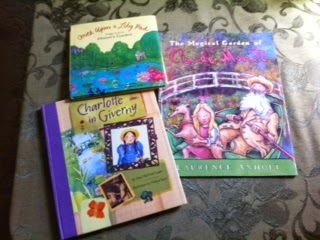
Once Upon a Lilly Pad-Froggy Love in Monet’s Garden by Joan Sweeny, illustrated by Kathleen Fain
Charlotte in Giverny by Joan MacPhail Knight, illustrated by Melissa Sweet
The Magical Garden of Claude Monet by Laurence Anholt
For an art exercise, ask children to pick out one specific item to draw or paint from a Monet painting. This can be a single flower or group of flowers, a tree, or even the bridge at Giverny. In the example picture shown here, students were asked to draw one large lily in a pond using light colored oil pastels, (white, yellow, green, pink and light blue) on watercolor paper. Next, students brushed various shades of blue and green watercolor over the oil pastel for a beautiful resist effect.
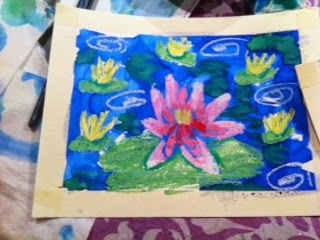
For a writing exercise, ask students to choose an animal that might live in Monet’s garden at Giverny--a bird, frog, butterfly, fish or even a lady bug. Have that animal or insect describe what they see in the garden, based on their unique perspective. Explain to the students that a bird would have a different observational point of view than a fish in the pond. Also include the animal’s observations of the painter as he arrives each day to paint his surroundings.
Happy summer!
www.joanwaites.com
Early summer has offically arrived, and flowers everywhere are in full bloom. When thinking about art and writing exercises for this time of year, the life and work of Claude Monet is the perfect inspiration.
Start a lesson or project by reading one of the many picture books based on the life of Claude Monet. Three books that I recommend are:

Once Upon a Lilly Pad-Froggy Love in Monet’s Garden by Joan Sweeny, illustrated by Kathleen Fain
Charlotte in Giverny by Joan MacPhail Knight, illustrated by Melissa Sweet
The Magical Garden of Claude Monet by Laurence Anholt
For an art exercise, ask children to pick out one specific item to draw or paint from a Monet painting. This can be a single flower or group of flowers, a tree, or even the bridge at Giverny. In the example picture shown here, students were asked to draw one large lily in a pond using light colored oil pastels, (white, yellow, green, pink and light blue) on watercolor paper. Next, students brushed various shades of blue and green watercolor over the oil pastel for a beautiful resist effect.

For a writing exercise, ask students to choose an animal that might live in Monet’s garden at Giverny--a bird, frog, butterfly, fish or even a lady bug. Have that animal or insect describe what they see in the garden, based on their unique perspective. Explain to the students that a bird would have a different observational point of view than a fish in the pond. Also include the animal’s observations of the painter as he arrives each day to paint his surroundings.
Happy summer!
www.joanwaites.com
Published on May 25, 2015 14:00
May 18, 2015
Writing Connections with Rita Williams-Garcia
by Mary Quattlebaum
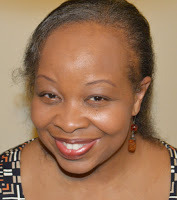 Rita Williams-Garcia includes family secrets, sibling dynamics, and the rural South in her novel Gone Crazy in Alabama (HarperCollins, 2015, ages 8-12). I talked with Rita recently about this third and final book in her historical series about three sisters—Delphine, Vonetta, and Fern Gaither—growing up in the late 1960s.
Rita Williams-Garcia includes family secrets, sibling dynamics, and the rural South in her novel Gone Crazy in Alabama (HarperCollins, 2015, ages 8-12). I talked with Rita recently about this third and final book in her historical series about three sisters—Delphine, Vonetta, and Fern Gaither—growing up in the late 1960s.
Click here for the KidsPost/Washington Post interview.
Below are a few writing prompts for the classroom or for individual writers ages 8 and up.
Family Tales: The book revolves around the sisters’ discovery of secrets that have affected their family for several generations.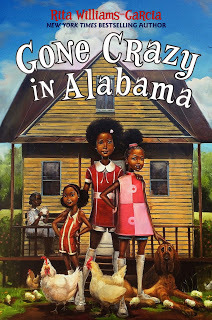
Classroom Discussion: Ask students to find an old family photo, keepsake, or heirloom at home or at an older relative’s house. Have kids brainstorm and prepare questions in class and then interview several family members about that object and ask them to jot down the different answers. Did they think of more questions based on the answers they received? What family member seemed to know the most? Why? What did students learn about the object and/or the family member doing this? What was a big surprise?
Classroom Writing: Ask students to write down a description and brief history of this object and to give a sense of how they feel about it. They also might share their writing/interview responses with a few family members (siblings, a parent, a different, older relative) and then talk about their relatives’ reactions in class.
SOCIAL JUSTICE/ANIMAL RIGHTS: The novel deals with the sexism and racism of the times in thought-provoking, nuanced ways. It is also one of the few novels with a young character who actively protests what she sees as the inhumane treatment of animals.
Classroom Discussion: How does Fern make her views known and how does she stage her protests? How do others react? Ask your students to list, as a group, some injustices they see in this country and in the wider world. Does each kid have a cause that he or she feels strongly about? Like Fern, how might students help to create change in a peaceful manner?
Classroom Writing: Have them choose a cause and develop a campaign/do some things (either individually or in small groups) to deepen school or public awareness and possibly lead to positive change.
www.maryquattlebaum.com
 Rita Williams-Garcia includes family secrets, sibling dynamics, and the rural South in her novel Gone Crazy in Alabama (HarperCollins, 2015, ages 8-12). I talked with Rita recently about this third and final book in her historical series about three sisters—Delphine, Vonetta, and Fern Gaither—growing up in the late 1960s.
Rita Williams-Garcia includes family secrets, sibling dynamics, and the rural South in her novel Gone Crazy in Alabama (HarperCollins, 2015, ages 8-12). I talked with Rita recently about this third and final book in her historical series about three sisters—Delphine, Vonetta, and Fern Gaither—growing up in the late 1960s. Click here for the KidsPost/Washington Post interview.
Below are a few writing prompts for the classroom or for individual writers ages 8 and up.
Family Tales: The book revolves around the sisters’ discovery of secrets that have affected their family for several generations.

Classroom Discussion: Ask students to find an old family photo, keepsake, or heirloom at home or at an older relative’s house. Have kids brainstorm and prepare questions in class and then interview several family members about that object and ask them to jot down the different answers. Did they think of more questions based on the answers they received? What family member seemed to know the most? Why? What did students learn about the object and/or the family member doing this? What was a big surprise?
Classroom Writing: Ask students to write down a description and brief history of this object and to give a sense of how they feel about it. They also might share their writing/interview responses with a few family members (siblings, a parent, a different, older relative) and then talk about their relatives’ reactions in class.
SOCIAL JUSTICE/ANIMAL RIGHTS: The novel deals with the sexism and racism of the times in thought-provoking, nuanced ways. It is also one of the few novels with a young character who actively protests what she sees as the inhumane treatment of animals.
Classroom Discussion: How does Fern make her views known and how does she stage her protests? How do others react? Ask your students to list, as a group, some injustices they see in this country and in the wider world. Does each kid have a cause that he or she feels strongly about? Like Fern, how might students help to create change in a peaceful manner?
Classroom Writing: Have them choose a cause and develop a campaign/do some things (either individually or in small groups) to deepen school or public awareness and possibly lead to positive change.
www.maryquattlebaum.com
Published on May 18, 2015 14:00
May 11, 2015
WRITING WILD
by Karen Leggett
If you could be any wild animal, what would you be? Kids can be motivated by animals any time of year, but in May there are at least four special days that encourage a focus on animals: Endangered Species Day May 15, International Day for Biological Diversity May 22, World Turtle Day (who knew?) May 23 and environmentalist Rachel Carson’s birthday May 27.
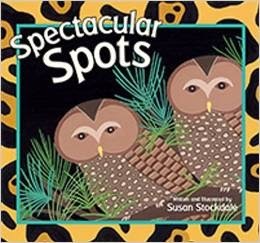
Gather a collection of books about wild animals to help children choose a favorite. Fun titles to include are Susan Stockdale's new book Spectacular Spots as well as her earlier titles such as Fabulous Fishes, Bring on the Birds and Stripes of All Types (also available in Spanish). Although written for very young children, these books provide excellent examples of verses students can write and the kind of information they can collect.

An alphabet book by David McLiman's,Gone Wild (2007 Caldecott Honor Book) introduces students to endangered animals all over the world - each with a specially designed letter that will inspire the young artists in your midst.
Ask students to write down basic information about their chosen animal’s habitat and food as well as a few interesting facts, gathered from the books you have collected or the Internet, depending on the age of the class and the time available.
Ask them to think about the questions posed in this quiz from the National Wildlife Refuge System as it pertains to their animal - What is your animal’s idea of a great adventure? What is your best quality? How close are you to your family and friends? What is your favorite food? How do you escape predators? What super power do you have (or would you like to have)? Students can actually answer the quiz questions and see a sample profile. Then ask them to write their own paragraph or personality profile about their animal - ideally in the first person.
If there is time to expand the activity, provide a list of animals and the profiles written by students to another class to see if the new group can match each profile to the correct animal.
http://childrensbookguild.org/karen-leggett-abouraya
If you could be any wild animal, what would you be? Kids can be motivated by animals any time of year, but in May there are at least four special days that encourage a focus on animals: Endangered Species Day May 15, International Day for Biological Diversity May 22, World Turtle Day (who knew?) May 23 and environmentalist Rachel Carson’s birthday May 27.

Gather a collection of books about wild animals to help children choose a favorite. Fun titles to include are Susan Stockdale's new book Spectacular Spots as well as her earlier titles such as Fabulous Fishes, Bring on the Birds and Stripes of All Types (also available in Spanish). Although written for very young children, these books provide excellent examples of verses students can write and the kind of information they can collect.

An alphabet book by David McLiman's,Gone Wild (2007 Caldecott Honor Book) introduces students to endangered animals all over the world - each with a specially designed letter that will inspire the young artists in your midst.
Ask students to write down basic information about their chosen animal’s habitat and food as well as a few interesting facts, gathered from the books you have collected or the Internet, depending on the age of the class and the time available.
Ask them to think about the questions posed in this quiz from the National Wildlife Refuge System as it pertains to their animal - What is your animal’s idea of a great adventure? What is your best quality? How close are you to your family and friends? What is your favorite food? How do you escape predators? What super power do you have (or would you like to have)? Students can actually answer the quiz questions and see a sample profile. Then ask them to write their own paragraph or personality profile about their animal - ideally in the first person.
If there is time to expand the activity, provide a list of animals and the profiles written by students to another class to see if the new group can match each profile to the correct animal.
http://childrensbookguild.org/karen-leggett-abouraya
Published on May 11, 2015 14:00
May 4, 2015
SPRING, SPRING, SING A SONG!
by Alison Ashley Formento
Spring is springing everywhere and it's easy to imagine dancing through a field of flowers and spinning around, full of song on top of a mountain like Julie Andrews in The Sound of Music.
One of my favorite interviews I did for a magazine was with country singer and multiple-award-winnning songwriter Dierks Bentley. We spoke about the best picture books having a musicality flowing through the rhythm of the words, echoing the same craft used in writing great songs.
National Poetry Month has just ended, but poetry is a part of our daily lives. We're attuned and attracted to patterns and rhythms in words we hear in songs and those we read, too. You can keep a "poem in your pocket" or "sing, sing a song" every day, at any time. I think of this as mind music and it's what gives songs that hook that makes you want to sing along and what gives great picture books that readability that makes you want to read them again and again.
I used rhythm and a song-style phrasing in sections of my nature picture books. In This Tree Counts!, the character Eli says, "Tree house, tree house in the sky, grow some wings and I can fly!" That line rhymes, but you can use sounds to create a rhythm without rhyming, too. In These Rocks Count!, a characters says, "Hot or cold, wind, snow, and rain—rocks get old, cycle of change."
Mind Music Writing PromptsThese phrases from some golden oldies can prompt students to write their own short chorus and create a refrain that can be shared aloud. Choose prompts from poems or songs which have a natural rhythm like these to help students spring, spring, sing on their own.
I did it my way.
Don't step on my blue suede shoes.
The Camptown ladies sing this song.
Take me out to the ballgame.
What a day for a daydream.
www.alisonashleyformento.com
Published on May 04, 2015 14:00
Mary Quattlebaum's Blog
- Mary Quattlebaum's profile
- 22 followers
Mary Quattlebaum isn't a Goodreads Author
(yet),
but they
do have a blog,
so here are some recent posts imported from
their feed.



